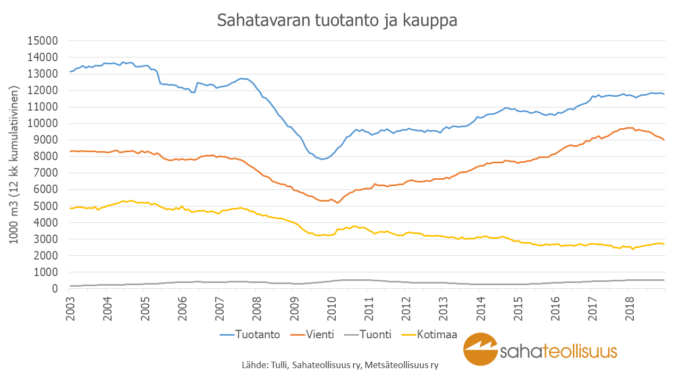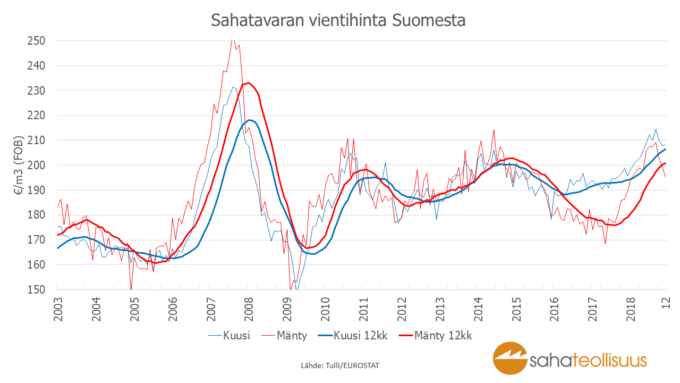The export value of sawn timber exports at the start of 2000’s was 1.35 billion euros. After the financial crisis the value fell to 0.8 billion euros at its lowest point. From there, the value improved to over 1.4 billion euros in 2015 and to 1.7 billion in 2017.
Domestically, the consumption of sawn timber was at its largest in 2004, when it reached nearly six million cubic meters in Finland. This figure includes both the domestic consumption as well as value added sawn timber, processed in Finland for export markets.
In 2017, the Finnish domestic market used three and a half million cubic meters of sawn timber. The decline in volume has been a result of a drop in the export of further processed products as well as unusually weak situation in the timber frame construction industry.
Over the last few years, the share of exports has increased rapidly, as a result of a weak demand from the domestic market. The share of exports of sawn timber grew to over 70 percent in 2016. Year 2017 export volume reached 9,7 million cubic meters, which was a new record.



